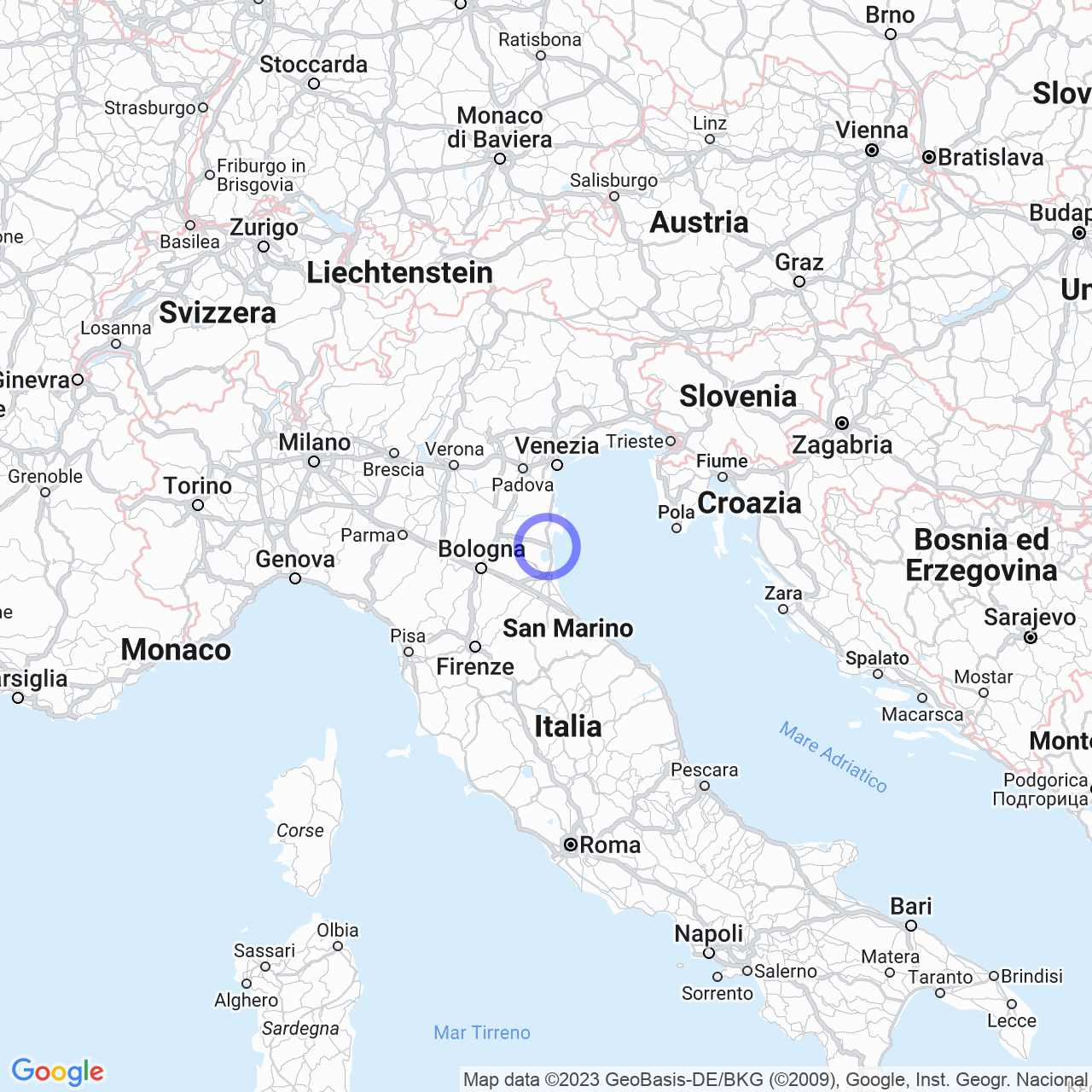Comacchio
Exploring the Valli di Comacchio
The Valli di Comacchio is a vast protected area located between the provinces of Ravenna and Ferrara in Emilia-Romagna. The valli, which include Lido di Magnavacca, Fossa di Porto, Campo (Comacchio) and Fattibello, stretch from Comacchio to the Reno River.
The Valli di Comacchio were formed around the 10th century due to the lowering of the land and the marshland of the coastal area. Initially, they were filled with freshwater from recurrent floods and river overflow of nearby rivers. From the 16th century, they were progressively infiltrated by seawater from the Adriatic, transforming them into brackish valli.
The Valli di Comacchio is home to numerous species of water birds and fish, including tench, pike and carp. The best time to visit the valli is during the spring and autumn, when thousands of birds migrate to the area.
The Museum of the Valli di Comacchio, located in Comacchio, provides visitors with a complete overview of the history and biodiversity of the valli. The museum boasts a collection of plant and animal species that are present in the area. It is also possible to visit an outdoor exhibition area, where various species of water birds can be observed.
The history of the Valli di Comacchio
The Valli di Comacchio were formed by the gradual marshland of the territories. At the end of the 16th century, the Valli were infiltrated by seawater from the Adriatic and transformed into brackish valli.
During the Early Middle Ages, the Valli were filled with freshwater from recurrent floods and river overflow of nearby rivers. The gradual desilting of the Reno River created a vast marshy area south of the Po di Primaro, called the Valle Padusa. In this place, Dante Alighieri contracted malaria during a trip from Ravenna to Venice and back.
A series of floods and the earthquake of 1570 moved the main course of the Po River northward, reducing the water flow of the Po di Volano and the Po di Primaro, and preventing the progressive burial of the present Valli di Comacchio.
The area of the historical Ferrara delta was put under the control and operation of the "Consortium di San Giorgio" from 22 December 1605, a public entity that progressively reclaimed the area. Through drainage and subsequent intervention agreements, the object of the reclamation was extended to about 120,000 hectares.

Conservation of fauna and flora
The Valli di Comacchio consists of four brackish valli that were formed due to the physical and chemical drowning of the coastal areas adjacent to the riverbeds. Conservation of fauna and flora is one of the major needs in managing the area.
The area of the Valli di Comacchio has been declared a Site of Community Importance and a Protected Natural Area. The area hosts many species of water birds, mammals, and fish, including otters, mute swans, great egrets, foxes, porcupines, and sperm whales.
Conservation of fauna and flora is entrusted to the local community and tourist operators operating in the area. Activities that can be practiced are fishing, navigation, and birdwatching.
Conclusion
The Valli di Comacchio is a vast protected wetland area located in Emilia-Romagna, between the provinces of Ravenna and Ferrara. The Valli, which stretch from Comacchio to the Reno River, are formed by four valli called Lido di Magnavacca, Fossa di Porto, Campo (Comacchio) and Fattibello.
The area hosts many species of water birds, mammals, and fish, including otters, mute swans, great egrets, foxes, porcupines, and sperm whales. Conservation of fauna and flora is entrusted to the local community and tourist operators operating in the area.
The area of the Valli di Comacchio has been declared a Site of Community Importance and a Protected Natural Area. The area offers numerous activities including fishing, navigation, and birdwatching. The Museum of the Valli di Comacchio, located in Comacchio, provides visitors with a complete overview of the history and biodiversity of the valli.
